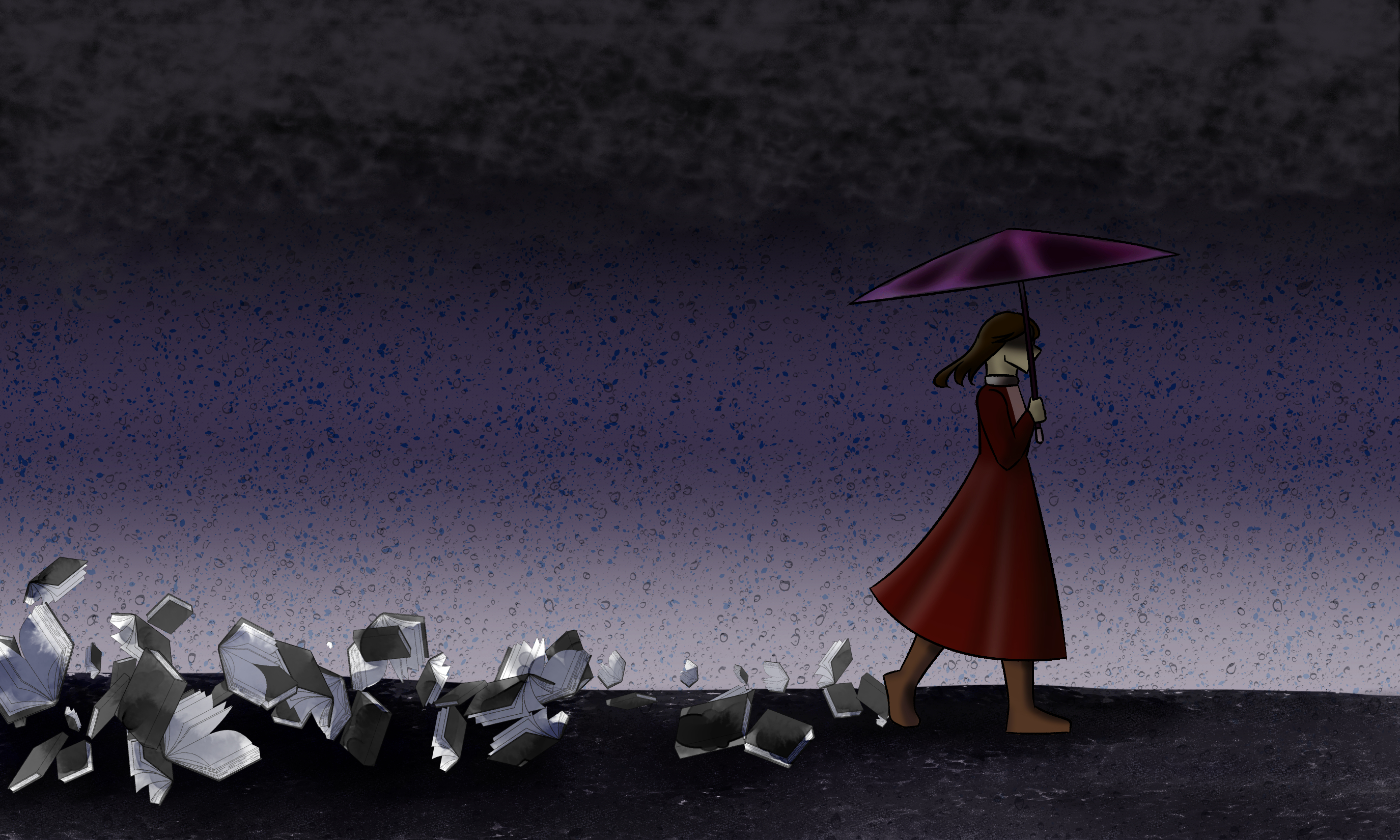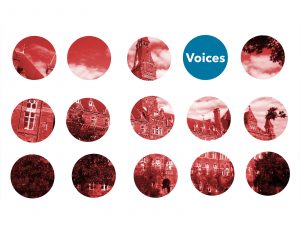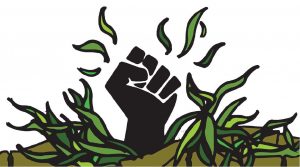One of my favorite novels is Ernest Hemingway’s The Sun Also Rises. It excellently captures the pathos of the Lost Generation, telling the fictionalized story of some of Hemingway’s own experiences as an American expat in Europe in the 1920s. The emotional heart of the novel—as much as one can be ascertained—is the tragic relationship between the narrator and the promiscuous Lady Brett Ashley—a love doomed never to materialize due to an injury the protagonist Jake suffered in the war, resulting in an inability to have sex.
The novel follows a group of Americans—all men, with the exception of Lady Ashley, with whom essentially every other character either is or wishes to be sexually involved—and explores themes of romance, trauma, sex, and, importantly, masculinity. It is remembered as a landmark piece of literature and a defining part of the modernist artistic movement.
And, despite the distinctly male gender of both Hemingway and most of his characters, I have never once, among this praise, seen it referred to as “men’s fiction.”
That should come as no surprise. “Men’s fiction” is, after all, not an established category of literature. It’s not the kind of thing you’d see demarcating a bookstore section or as the title of a chapter of a literary anthology. Sites like Goodreads are not replete with lists of the “100 Best Pieces of Men’s Lit.” To categorize or define a novel as “men’s lit”—to even conceptualize it as a category at all—is more or less unheard of and patently absurd. When it comes from a man, we are asked to expect a gendered perspective and overtly masculine themes as just some of the many features of a work of literature that do not define the work overall.
Unfortunately, when that perspective is female, this logic seems to somehow not apply.
Women’s fiction, though, is a “real” category. The label “women’s lit” does get thrown around in bookstores, in anthologies, and on literary websites. As a genre, or maybe just a category—how women’s fiction works as a label isn’t entirely clear; women’s fiction can be hard to define. More commercially focused definitions revolve around the fact that women’s literature is marketed towards women (especially those no longer in their twenties). Definitions more focused on the content and nature of the works tend to include in the category anything revolving around “uniquely” female experiences—think motherhood, feminism, specific elements of romance.
There are debates around how female the intended audience needs to be for something to count as women’s lit, where “chick lit” fits into the equation, and whether or not the label can include works written by men (Gustave Flaubert’s Madame Bovary and Nathaniel Hawthorne’s The Scarlet Letter rarely appear on lists of women’s literature, despite their female-focused subject matter, in large part because they are written by men). Generally speaking, though, I’ve found that if a work’s author is female and its themes or plot could reasonably be considered female-specific—as, incidentally, is the case with much of my own writing—that work counts as women’s fiction.
At face value, this seems like a reasonable enough categorization to have. But it’s what the genre’s existence implies about women, both in general and in literature specifically, that is cause for concern.
One of the principal issues with determining what counts as women’s fiction based on whether or not it has a uniquely female focus is that, in many ways, anything a woman ever experiences could be considered “uniquely female.” Our lived experiences are affected by our identities and circumstances, meaning that gender, like any other category of one’s identity, is liable to make its influence felt in essentially each and every one of our experiences.
Consider again The Sun Also Rises. As a novel, it’s a hell of a lot more defined by topics of gender than plenty of works that appear all too frequently on lists of “women’s fiction”: Sylvia Plath’s The Bell Jar, Virginia Woolf’s To the Lighthouse, Toni Morrison’s Beloved, and Betty Smith’s A Tree Grows in Brooklyn, to name a few. That’s not to say that these novels aren’t impacted by their author’s gender; they certainly are. But this gendered perspective is only one element of these works, which also tackle themes as meaty and important as depression, financial inequality, and the intricacies of human relationships. These are multifaceted, complex novels—novels inadequately described when referred to simply as “women’s lit.”
If Hemingway’s story on the then-male-exclusive war experience and resulting sexual impotence is merely an example of literature, no gender-related qualifier required, then so too should the aforementioned examples of “women’s lit.” Our failure to apply this logic evenly can be seen as nothing other than an obvious double standard.
But it is not merely the fact that the category labeled “women’s lit” has no male equivalent that bothers me, since, after all, the experiences women have in this world are different from those of men. The same can be said of, beyond just women, all non-male individuals (whose fiction tends, as it were, to be sidelined similarly to women’s through categorization as “LGBTQ+ fiction”). So, if differently gendered experiences don’t mirror each other in reality, there is no reason their literary genres should.
Following the logic that gender does create unique experiences, “women’s lit,” insofar as it refers to literature entirely or primarily focused on the subject of womanhood, seems to pose no problem. Kate Chopin’s The Awakening, for example, deals explicitly with the topic of breaking out of the repressive societal role for women in New Orleans in the 19th century. Because men do not experience this same type of historical repression on the basis of their gender, I would find it difficult to argue that categorizing the book in a way that makes heavy mention of gender is unwarranted. The novel does not just include gendered themes, but is more or less entirely focused on the topic of womanhood, making it a prime example of what can actually be accurately described as women’s lit.
No, it is not the existence of uniquely female literature as a concept that strikes a nerve with me, but the effects that this labelling can have on not just female authors but all women.
The fact of it is, by framing everything they have to say as “women’s,” the label of “women’s fiction” effectively bars female writers from participation in broader, ungendered discussion through their work. Even if the category of women’s fiction isn’t intended to include every work of fiction with a female author, in reality, the label is applied far more widely than its theoretical description would imply. Though there certainly are some female-written works of literature that escape the label, a novel need only barely brush a topic that could be construed as somehow specific to the female experience for its fate to be sealed.
Toni Morrison’s 1987 novel Beloved, for example, tackles many more far-ranging and dominant themes than motherhood, and yet is still featured in lists of women’s lit by literary players like Goodreads. Morrison has just as much to communicate in the novel about family dynamics, generational trauma, coping with pain, and Blackness (as well as the legacy of American race-based chattel slavery, specifically). In fact, a significant part of the novel’s thematic exploration actually focuses on manhood, a topic that’s specifically inapplicable to women. By classifying Beloved as women’s fiction, one implies that speaking on womanhood is its sole, or at least primary, purpose. The label simplifies a complex, nuanced work of art down to a single topic of exploration, effectively denying Morrison’s contributions to discussion around the novel’s other themes the attention they deserve.
This delegitimization of female authors is not just speculation. The tendency to view anything even touching on femininity as somehow relegated to the world of women specifically has very tangible effects on men’s willingness to pay heed to or even bother to read work by women. According to Nielsen Book Research (in a study commissioned for Mary Ann Sieghart’s The Authority Gap), while readership of the top ten best-selling male authors was fairly evenly split across genders—55 percent men and 45 percent women—when it came to the ten best-selling female authors, men accounted for only 19 percent of their readership.
This not only results in the tendency for female writers to be considered more niche than their male counterparts, leading to both relatively fewer material sales and less literary respect, but also has a profound effect on the lens through which male readers view the world. By framing all literature from a woman’s point of view as specifically for women, we push men away from consuming written works that could broaden their perspectives away from the extremely limited male one, which has broader implications that affect all women, not just those who write.
This perceived need to earmark any and all literature with female focuses as specifically for women is also both symptomatic of and catalytic for the broader cultural tendency to view men as the universal default, and women as merely an aberration from this distinctly male norm. There’s no shortage of documentation of this phenomenon (called androcentrism in analytic discussion) and its impacts—from the inconvenience women (on average 5-foot-4-inches in America) feel in a world physically built for a six-foot-tall man to the injury and death caused by cars’ safety systems designed with a more typically male stature in mind—and the view of female-focused fiction as needing qualifiers where male-focused fiction does not plays right into it. “Male” is not the default state of human existence, but merely one of many options, and it’s about time our understanding of literature reflected that.
My push to change the perception of women’s fiction away from that of a niche gendered category and towards acceptance as literature, full stop, isn’t a purely impersonal, altruistic one; I myself am not only a woman, but a fiction writer. And as such, I am deeply affected by the topic on an individual level. My writing, though usually not autobiographical by any means, cannot help but draw from my own perspective of the world. Even without the conscious reflections on womanhood and gender I often include in my work, the influence of my experiences as a woman would already put me dangerously at risk of being considered a writer of women’s fiction. Perhaps my aversion to this classification of my work is little more than internalized misogyny—certainly that played a role when I was younger—but I’ve done enough self-reflection to confidently say that there’s more to it than that. I do not recoil from labelling myself a women’s author merely because of the word “women,” but instead for reasons of principle, for the real-world impacts this label has on the way women—and even womanhood itself—are perceived.
I don’t plan on changing the themes or focuses I find myself drawn to writing about, nor should I have to, despite the unjust classification it may well earn me in my career. Hell, maybe someday I’ll even come to enjoy being considered a woman’s author. But, until Hemingway is a “men’s author” and his works appear on lists of “men’s lit,” I very much doubt it.





